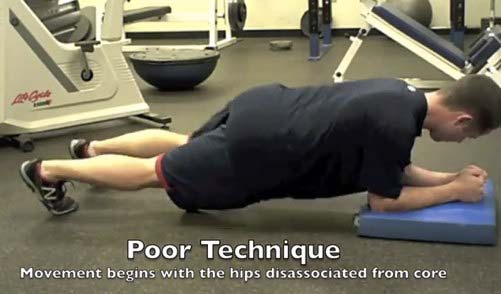Quality over quantity – It is a phrase that we have heard countless times before, though probably could apply it more. This simple concept has been one of the most recurring themes in my teachings as well as my core philosophies throughout my career. But, this took me some time to fully understand the true power of “quality over quantity.” (Photo by David Gallagher)
This is how I learned that lesson.
My Experience
I started my career off in an outpatient setting that thrived off quantity. Our clinic was huge and always packed. We could churn out some patient care, that is for sure. Call it what you want, but it was a high volume machine. Was it an awesome experience? Absolutely. Was it an invaluable learning experience? Absolutely. You can learn so much by seeing so many different patients in such a short amount of time.
At the time, that was the culture. Mass market rehab centers were popular and spreading, and why not, I am sure they made a killing in profit. Funny thing was, I had no idea why the turn over rate of therapists was so rapid, usually coming and going within a 1-2 year span.
Then one day I figured it out. I am sad to say that I have treated 40 patients in one eight hour work day with no assistance. I remember that day clearly. My assistant had an illness in the family and I had a full schedule. As I plunged my way through the day, I remember clearly thinking to myself
[box size=”large” icon=”none”]“I am not giving my patients quality care today.”[/box]
I remember that feeling clearly and it was awful, I bet many of you have felt that too. I marched in my clinic director’s office at the end of the day and said to him (and really myself) that I would never do that again, sacrifice quality because of quantity.
Quality Over Quantity in Our Practices
My experience above is probably not that uncommon and a major reason why so many therapist are willing to take the risk of moving into private practice. The changes in healthcare and insurance reimbursement is creating a huge challenge for physical therapy clinics that are seeing their per-patient reimbursements shrink.
To me, the solution is obvious – we have to move to include more of a cash-based practice. But we as a profession just aren’t there yet, people routinely pay for chiropractic, massage, acupuncture, fitness, and other services out of pocket, yet balk at a $20 co-pay for physical therapy.
[box size=”large” icon=”none”]But can you blame the consumer?[/box]
Think about it. What do they get from the above mentioned providers? They get quality. They get individualized care. They get one-on-one attention. These are all things that we sometimes miss in physical therapy as we schedule overlapping patients. What would you think if you went to the dentist and they cleaned two teeth, then went to help someone else, came back to clean a few more teeth, then moved on to someone else, and so on?
Unfortunately cash-based practices aren’t always possible, especially in more rural areas. (As a side note, Jarod Carter has a whole website dedicated to starting a cash-based practice that is worth checking out if this interests you). And seeing multiple people at once isn’t always bad.
In the past, I wrote articles about what we can all learn from a barbershop and what we can all learn from Steve Jobs. If you haven’t read them, this would be a time to go back and take a peek. The message on both is the same – people come to you for an experience.
[box size=”large” icon=”none”]Don’t be content provided mediocre care. We are better than that. [/box]
For the young clinicians, get better at using your hands and less machines. People come to you for manual therapy. If you aren’t comfortable yet with your manual therapy skills, keep working on them and attend seminars to continue with your development. It is well worth your investment.
Quality of Quantity in Our Programs
While the principles above apply more specifically to the broad sense of our business, the “quality over quantity” concept also is important in our programs. In both the rehabilitation and fitness settings, I have seen many people get locked into a program that they wrote without:
- Individualizing the program
- Adjusting the program based on the person’s response
- Paying attention to the detail
Many times we get caught up in the fight to get from point A to point B that we forget that sometimes the journey is the greatest part.
Rushing through an exercise just to say you finished it without assuring movement quality is just as bad as selecting poor exercises. You essentially are strengthening the person’s compensatory pattern and fostering poor movement quality. This is probably what led to their tissue breakdown and into your clinic or facility!
I have talked about this quite a bit as it comes to core training. This is an underlying theme in my Functional Stability Training of the Core program, quality over quantity. This serves as a good model for discussion but it really goes well beyond the “core.” As an example, the internet is filled with aggressive and advanced core exercises that realistically are not appropriate for many people. Forcing these on your patients and clients just to seem cutting edge will only hurt them in the long run. The body will find a way to accomplish a task, sort of like the path of least resistance.
While there are a million bad examples on the internet, I’ll use an example of myself showing poor technique during a plank:
This is a great way for me to perform a plank poorly, using too much of my right side wall and right hip flexor. This avoids my deficiency with my left side wall and kicks in the psoas for lumbar stability. In long run, doing this will feed into my poor motor patterns and cause more harm.
Remember motor control is one of the bigger issues we should all be addressing, not just stretching what is tight and strengthening what is weak. Remember that next time some is performing an exercise with poor technique right in front of you… correct them! This is again another example of “quality over quantity.” Help people move better and help them feel better.
Think about this next time you are working with someone. Be a stickler for technique. We have to do this to truly enhance performance, wether it is athletic performance or just simply human performance.
Sorry, I rarely take advantage of my audience and use this forum to “rant.” I much prefer teaching! However, I can’t tell you how many people ask me where to get started when trying to improve their own skill set. Quality is a good place to start! What are some of your experiences as you have learned the concept of quality of quantity?
[hr]







